If you think that lighting is important, you are correct. If you’re wondering why other creators’ videos look better than yours, lighting could be one of the reasons. Why is that? I will tell you, but first, let me tell you a story!
Chasing Dreams in the Shadows
The Broke Dreamer Purchase: I have been doing videography for about 7 years now and content creation for 4–5 years. at one point, my only dream was to own a camera. I was a brokie wanna-be filmmaker at that time. At the start I worked for free just to get my hands on some gear, then borrowed it and in 2020 right when the pandemic hit I achieved my dream and bought a Lumix G85 with a kit lens, but that was my biggest mistake!
Technical Challenges: I was happy at first, but couldn’t work outside due to the pandemic. So, I decided to create content. However, I faced some issues. Although my new camera captured high-quality footage, my 32 GB SD card was slow. My old 2014 Toshiba laptop was crushing all day causing me to suffer.
Identity Crisis: So I called myself a storyteller and videographer, but I could not say Filmmaker. I felt embarrassed about my work quality. Filmmakers tell great stories, and great stories need good lighting.
Regrets and Reflection: I used to put a lot of effort into looking average. I made DIY lighting and even printed my favorite movie scenes to put on my wall. I regret making many of those lights because it took a lot of energy to create them, and I ended up throwing all of them away, except one, it’s in the garage let me grab it.
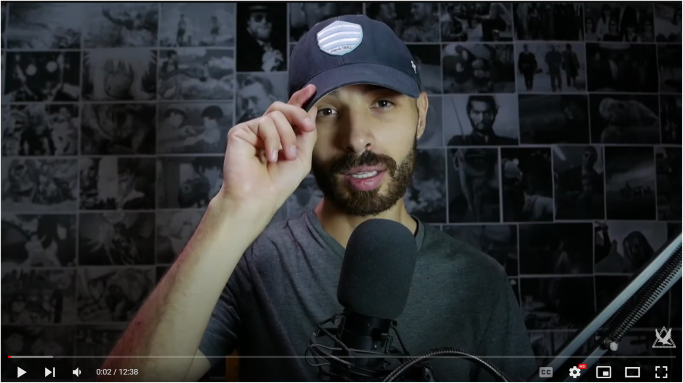
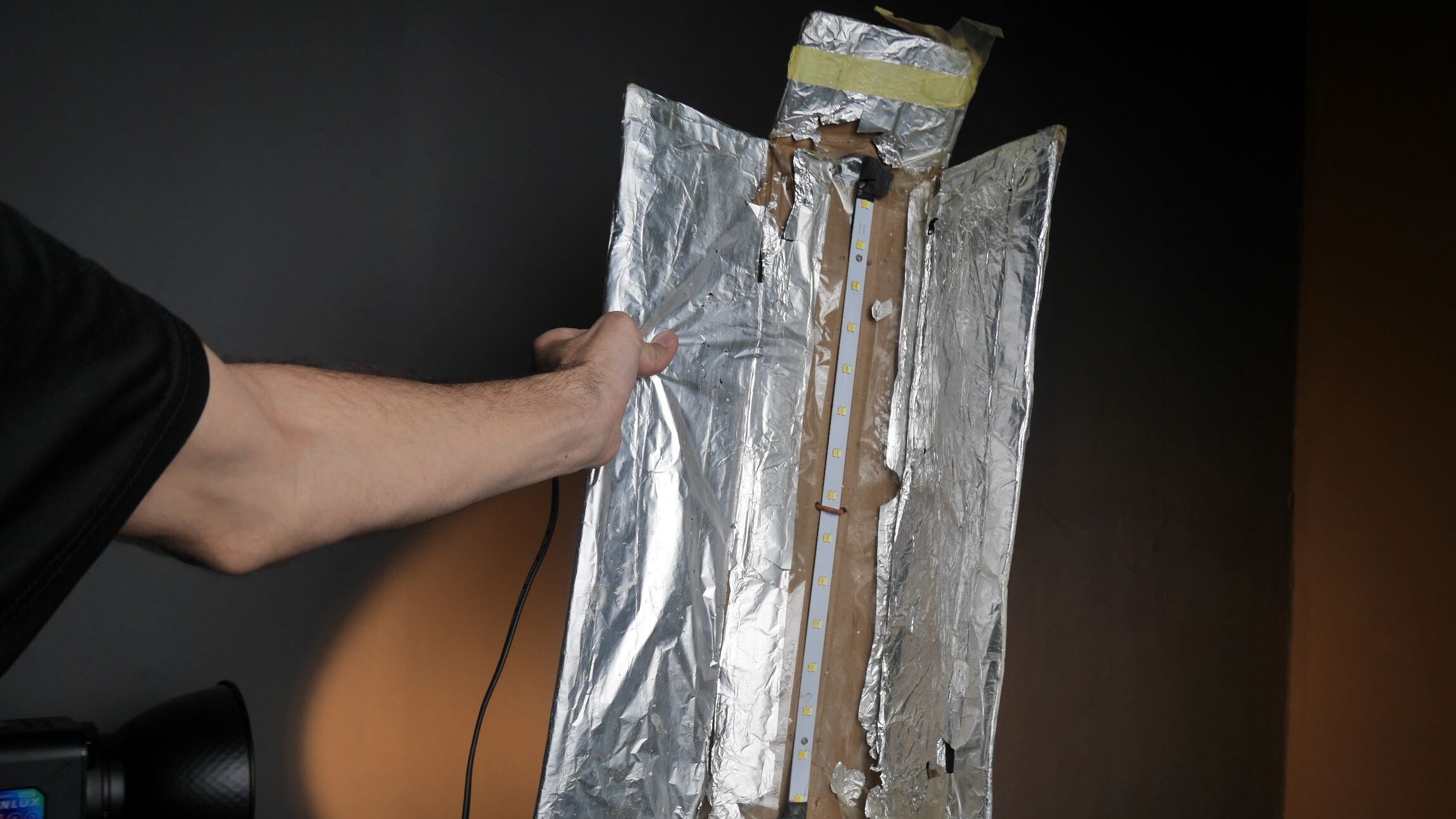
Financial Wisdom: If I had $500 again, I would buy lights and a cheap camera. I’ll share a post about the most affordable camera options for starting your content journey and achieving a polished look without spending too much.
Stalled by Overthinking: I stopped for a while for different reasons. When I returned, the same reason was still holding me back: a better camera called Lumix G9. but still overthinking each setup again!
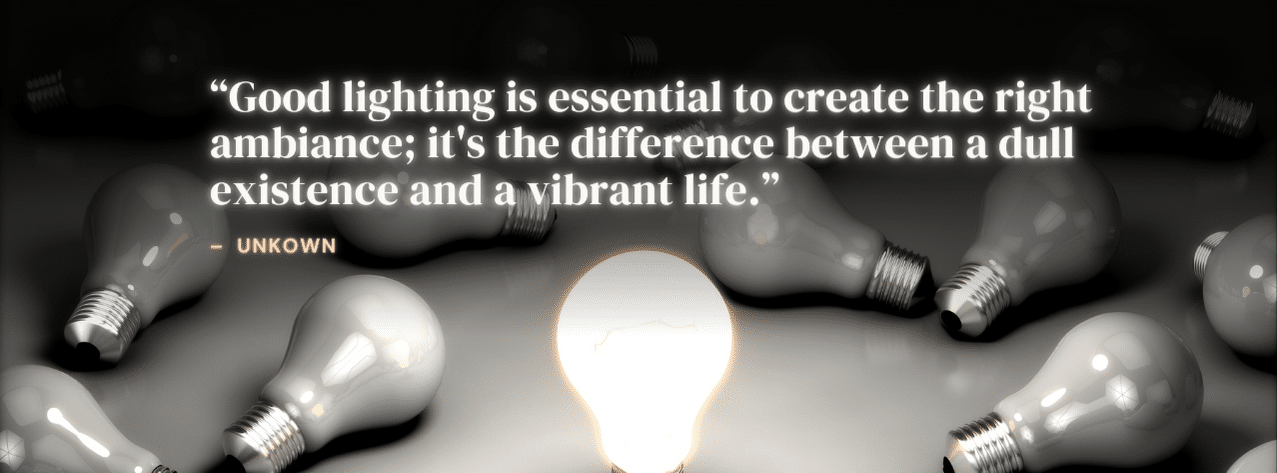
Light is the Image!
The quality and type of sensor in a camera can significantly impact the image quality. However, the image quality also depends on the amount, quality, and distribution of available light. Light determines whether a subject can be viewed at all.
Good lighting can enhance the colors and textures of an image, while poor lighting can make everything appear blurry and washed out, let us not forget most creators’ nightmare grain, or what you can call noise.
I don’t plan to dive deep into camera sensors. You can check this article by canon-europe if you are hungry.
But the only thing we need to take from this is that we can’t have an image without light, and a good image is only possible if we have good lighting with the right settings (the idea and the subject and decoration are a part of course and that’s not our main talk).
The Misconception of the ‘Perfect’ Camera
As I told in my story below I used to use a 4K camera and trust me I tried to shoot 4K in it. I remember having to cancel a short film I was trying to make since my laptop could not read, write, or compress the footage I had, plus the image was acceptable since I was trying hard, but I would not say it was filmic, since it lacked light.
Eventually, I ended up sticking to shooting 1080p, and I could have got a 1080p camera for $170 and invested the rest or not stayed broke at least on the hardest day called the pandemic!!
My point is to make it easy and enjoyable for you and you can’t if your camera files are more powerful than your computer, your software, and “your lighting setup.”
It’s all about getting things done, and the search for the perfect camera is an obstacle in the way.
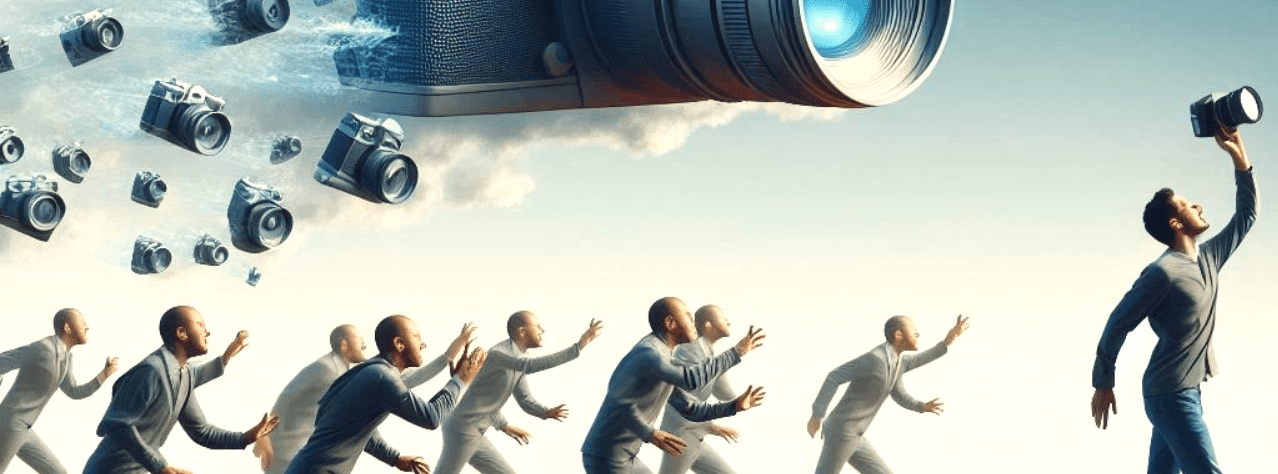
The Role of Lighting in Storytelling
You can argue that you don’t have time to look at cinematography and I believe if you are just thinking about investing in light, or you just did, that’s the greatest step.
I think even without following the rules you will feel the impact of lighting to your story, just like the 80-20 rule, light is light, and it’s better to be available for your sensor.

Let us highlight how different light can affect your story and mood.
There are many ways to light a subject in film and content creation in general.
I will mention a few.
- Front Lighting (0 degrees): Light is shining directly on the face, illuminating it and minimizing shadows. But be careful: it can sometimes make things look flat.
- Side Lighting (90 degrees): Light is coming from the side, creating dramatic shadows and bringing out the texture of whatever you’re filming.
- 45 Degree Lighting: This is a balance between light and shadow. Not too direct, not too side.
- Back Lighting (180 degrees): Light is coming from behind. It can create a cool silhouette effect.
- Overhead Lighting: Light is coming from above. It can create dramatic shadows, especially under the eyes and chin.
- Under lighting: Light is coming from below. It can create an eerie, unnatural look.
- Harsh Lighting: Light is strong and intense, creating strong shadows. It can be too much, but sometimes, that’s exactly what you need for a dramatic effect.
- Soft Lighting: Light is diffused, and the shadows are soft. It creates a dreamy, romantic mood.
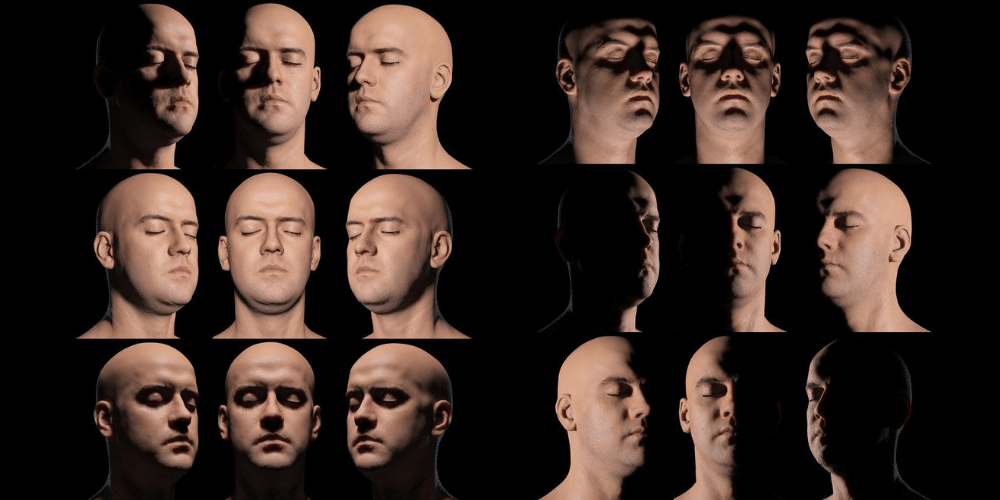
Remember, these are just tools in your toolbox, a fraction of how you can play with light. How you use them is up to you. Experiment with them, play with them, and most importantly, have fun with them.
How Content Creators Light Their Videos?
As creators, we don’t have to complicate our light if our content is not based on cinematography, yet we can choose to build and forget, we need a system!!
Most creators use a lighting style called Rembrandt; it is kinda third one 45 degree lighting. studio bender made a good articale you can check here
Here is the most popular lighting placement technique used in film and content creation:
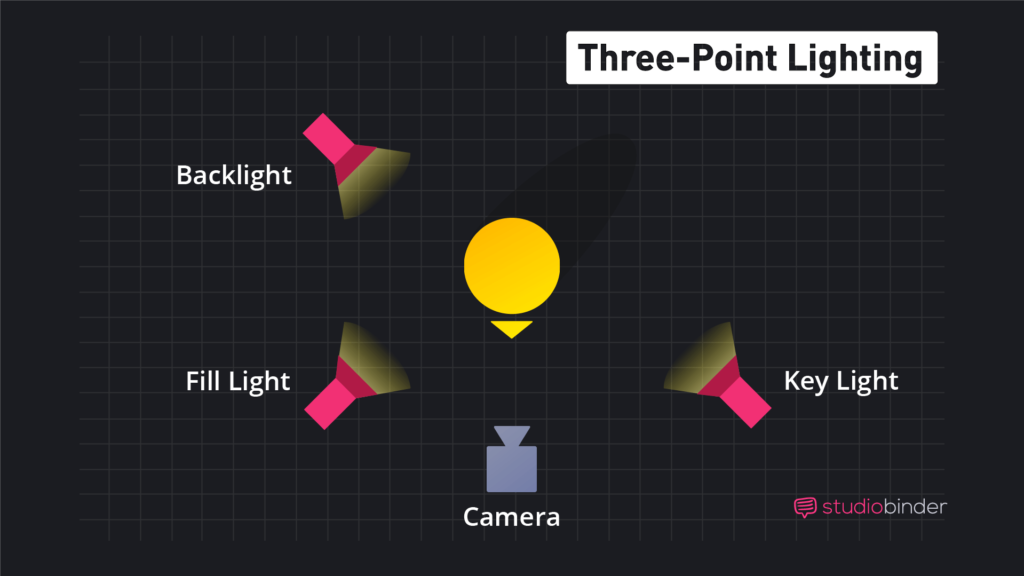

Three-Point Lighting: This is a standard method used in visual media. By using three separate positions (the key light, backlight, and fill light), the cinematographer can illuminate the subject any way they want, while also controlling shadows produced by direct lighting².
Examples from popular creators
I will take 2 examples here: a long-form creator and a short-form creator.
One is Ali Abdal and the other one is Tom Noske on IG

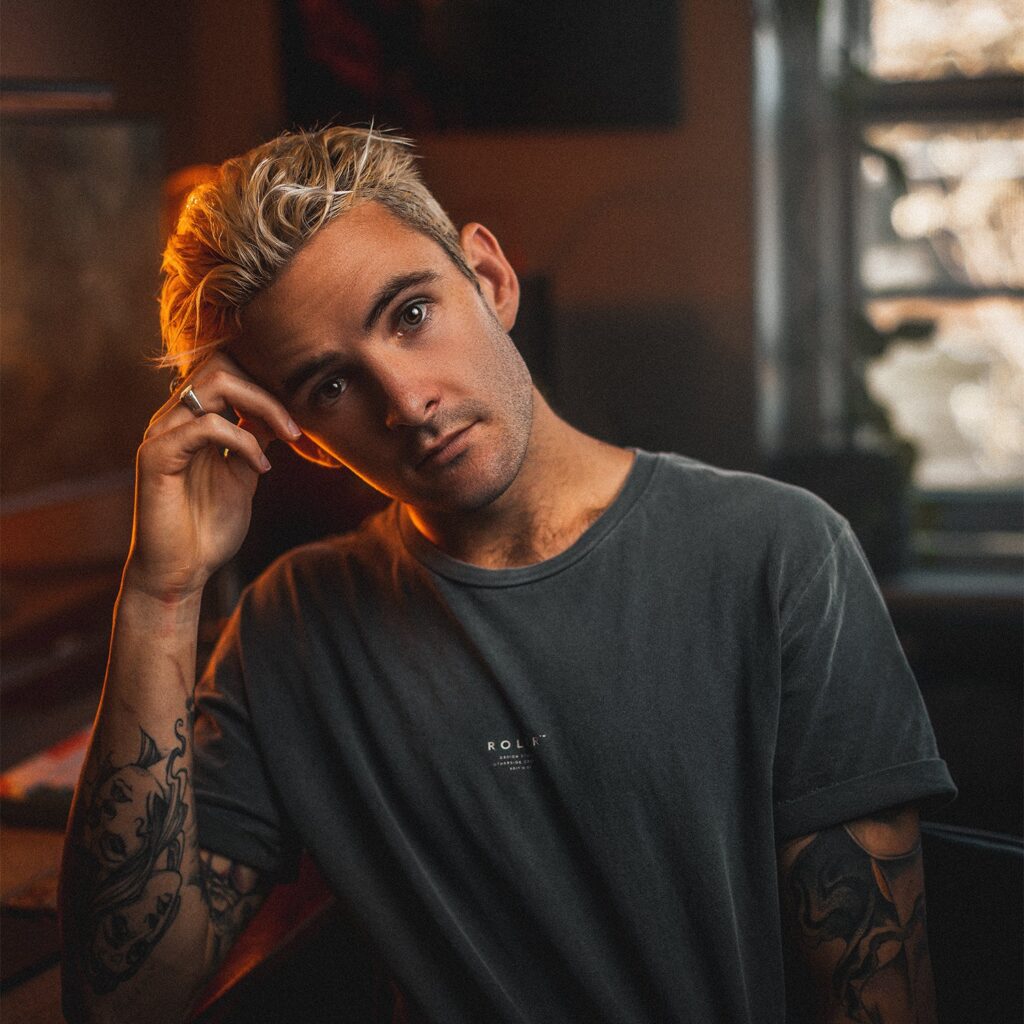
Starting with Ali, as you see he uses a natural approach to lighting, with minimal shadows. We have to mention the lighting is not the only factor here, the design, the decoration, and the plants all present a welcoming approach to the contrary Tom uses a sophisticated yet simple dark low-key lighting.
Mostly he uses colder lights in the background as practical. He uses a fast aperture and got close to the camera to get more of a separation between the dark mood background and utilizes the “getting close to talk to you gesture” just like he is going to say something casual yet important to a friend.
He also sometimes uses bold fill lights like red and that shows how sharp and bold his choices and the choices of his followers are, which makes sense since his audience is searching for freedom and leveraging content creation to get into that and that’s bold, that’s red.


Recommended Lighting Equipment for Content Creators
Here are some lighting products that are highly recommended for content creators and I will start with the ones I personally use and then go from cheap to some popular choices, these are Affiliate Links, most of them are cob lights and buying from them would get me a cut which will help me continue:

- W140 RGB LED Video Light: Cheap, versatile, RGB, rechargeable. What can you ask for more?
- COLBOR CL60 65W COB LED: I own the 120W RGB version, it’s pretty, awesome and quiet. This one is better because it’s small.
- Yongnuo YNLUX100 LED Video Light: This one can be purchased with an NPF battery handle. I personally own the RGB version and I absolutely love it. However, it’s important to be cautious because if you find it at a very low price, some stores might not include the power adapter. That’s why it may seem too cheap.
- Aputure B7c RGB Light Bulb: Best LED bulb.
- Aputure Amaran 150c COB Video Light: the brand speaks for herself.
- ZHIYUN Molus G200 + G300 Lights: The smallest powerful cob lights, the g300 can reach 500W which is insane for the size. Check also their Molus x100. However, Colbor made a similar one called W100 and W60, and it’s cheaper.
I will update it later with more products
Overcoming Challenges in Content Creation
Not having lighting equipment is not a dead end. All I am saying is to get a good key light!! So don’t be like me and stop, don’t stop because we always have the sun, the sun is your best friend!
However, another cheap lighting equipment I would like you to get is a lamp.
Have you ever wondered why Hollywood movies use lamps in the majority of their films and most of their indoor shots?

Simply, they make everything cinematic, and they help justify the other lights as practical, and you can even use them as a key light or fill light.
If you don’t know the difference between practical, key light, or fill light. You can check this video here.
And you can use them as both a fill light and a practical or even a key light!!
Another popular option is a ring light. Now you have to be careful when using a ring light because the effect that it produces, does not look natural to the eye, especially the catchlight inside the eye, and depending on your content you don’t want to use it.

A final idea is that you definitely can make your light with different components from your local store, but I don’t recommend that because you will eventually have to throw them away, and setting them can be a pain, and we don’t want a light that is hard to use, we don’t want to make content creation harder for our selves.
So buy a pocket RGB you won’t throw that and save up your money, use the window or your PC screen, we don’t throw our money into things that make it harder for us!!
Starting Your Content Creation Journey on a Budget
For this one, you will have to wait for another blog post. I am sure it will save you hundreds if not thousands of dollars, so subscribe if you want to win $$$ and read it. It would be helpful if you let me know what you want to read, and I will put it on the posting schedule.
Conclusion

We’ve journeyed through the importance of lighting in content creation, explored various lighting techniques, and even dived into some affordable lighting solutions.
In conclusion, lighting is not just an accessory but a powerful tool in content creation or personal branding. It’s the secret ingredient that can make or break your content.
All you need do is be intentional about it and that’s it, go ahead, and lighten it up but don’t burn your home studio buddy!!
Subscribe to my monthly content newsletter, the one blog for mastering the art of business growth through exceptional writing and video production. Don’t miss out!

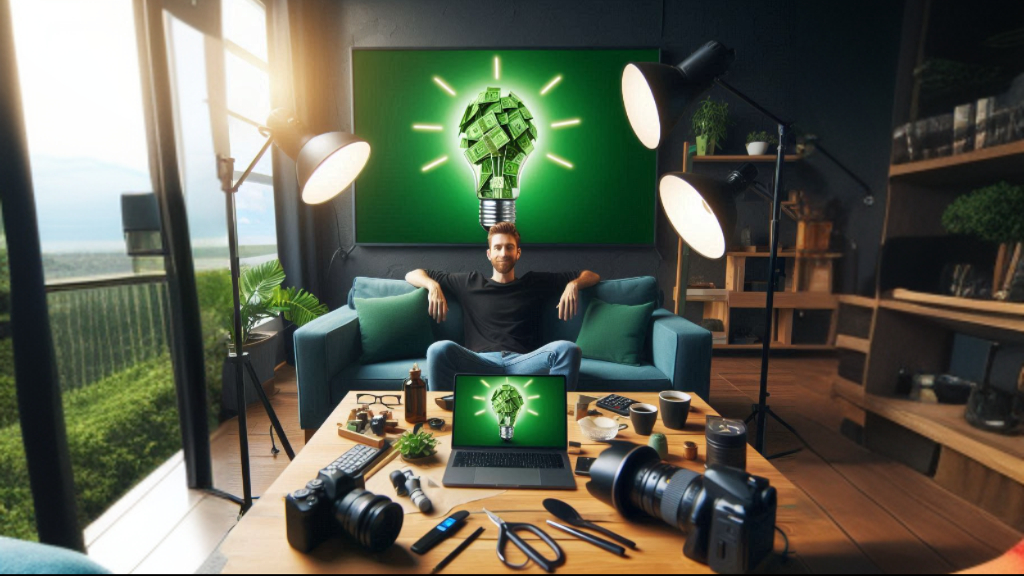
This has been super insightful. I am glad I found this at the start of my content creation journey!
I’m glad you found this insightful, brother. I wish you all the best on your content creation journey. I’ll be cheering for you! Let’s go!